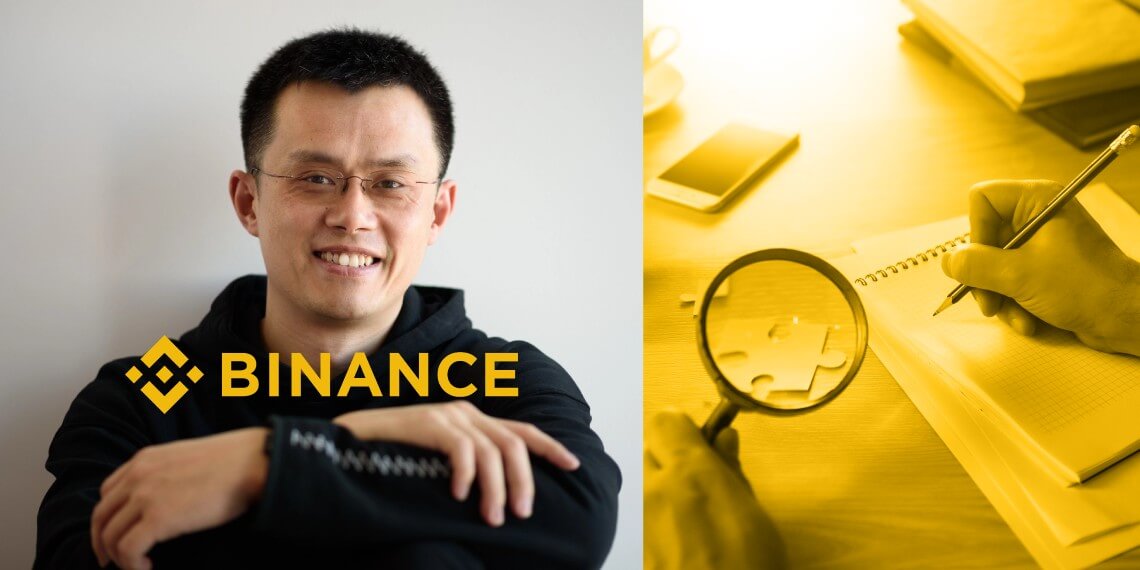On Monday, Binance conducted an AMA (Ask Me Anything) session on Twitter, wherein the CEO Changpeng Zhao answered some troubling questions regarding Binance and the cryptocurrency industry. Below are key takeaways from the 80 minutes AMA session which had more than 40,000 listeners.
Thank you to all 40k+ of you who tuned-in, it was certainly our largest Twitter space to date!
— Binance (@binance) November 14, 2022
In case you missed it, you can listen to the replay below – action starts at 8m 25s.
Catch you all at the next one 🤝https://t.co/4t8fJqQjbG
Binance is Working on a Proof of Reserve protocol with Ethereum’s Vitalik Buterin
Binance’s CEO said Ethereum’s co-founder Vitalik Buterin may have gotten an idea of how exchanges can prove their reserves. He said Buterin is working on a novel proof-of-reserve protocol and wants Binance to be the first test case of the new protocol. Zhao said the Binance team will closely work with Buterin in that aspect. The estimated timeline for completion of the protocol could be in the next “couple of weeks.”
Recall last week, Binance proposed adopting a Merkle-tree proof-of-reserve as a solution to reinstate and promote industry-wide transparency and trust, which seem to have dwindled in light of FTX’s collapse. In the AMA, Zhao said he’s been conjointly working on this particular solution since 2014.
More or less a drawback, Zhao added that this proof-of-reserve approach needs a third-party auditor involved, but unfortunately “the number one third-party auditor needs is currently busy because everyone is trying to do proof-of-reserve.”
SAFU: Binance has not taken loans from other companies
Speaking on the safety of users’ assets on Binance, Zhao reaffirmed the exchange’s previous SAFU (Secure Asset Fund for User) claims.
According to him, Binance operates a simple business and has not taken any loans from companies, nor has the exchange received venture capital funding that was returned in the form of a loan, swapping and reverse investment. “We don’t have loans, we don’t have debts, we don’t owe anybody any money,” Zhao said.
Backing the claims, he also stated that Binance has never taken out funds from the platform or users’ assets as loans to third parties to manage or generate yields. Also, the exchange does not engage in trading. CZ said the exchange only makes profits from users’ trading fees.
He admitted Binance conducts certain services like Margin Program, where users’ savings are lent to margin traders and DeFi Staking. However, those funds never leave the exchange and all risks associated with the services are managed by Binance systems.
“Nothing is risk-free. Crypto exchanges are inherently quite risky businesses. You have to run them well, you have to do security well, you have to do a number of things well. But we are self-contained. We don’t owe any other people.”
Binance’s large holding of BUSD is not a risk
Ahead of proof-of-reserve, Binance published wallet addresses to its holdings, which spurred concerns as a larger percentage of the exchange’s holdings were dominated by BUSD and BNB, which are supposedly owned by the exchange.
According to Zhao, the large percentage of BUSD in Binance reserve is because the majority of the exchange’s users have converted their holdings to BUSD to hedge against the bear market. Binance doesn’t convert users’ cryptocurrency holdings. Hence, whatever assets users hold the most would make up the majority of the exchange’s reserve.
“On an exchange today, in a bear market, if their assets do not include a large percentage of stablecoins, that is a risky sign. Because anywhere in a bear market, a lot of people have to convert Bitcoin, Ethereum, and BNB into stablecoin,” Zhao said.
Furthermore, Zhao clarified that BUSD is not issued by Binance, but by Paxos, which is a regulated company. In his words, BUSD is the most fiat-backed and transparent stablecoin. While other stablecoins reserves are diversified into different investment vehicles, BUSD is primarily fiat-backed.
Binance will assist good projects struggling with liquidity
On Monday, Binance announced plans to establish an industry recovery fund, in light of the FTX collapse. While emphasizing the move, Zhao admitted that Binance is one of the strong companies with healthy cash reserves, and through the initiative, it looks to help good projects survive the liquidity crisis and market turmoil.
Zhao added that about four other funds have indicated interest to join the initiative, including some projects and industry players.
Don’t guess the market: Just HODL
Over the past week, the cryptocurrency market has seen immense downside volatility amid intriguing developments regarding exchanges.
To this regard, Zhao tendered his advice to cryptocurrency users, saying the overriding basic approach to such a market condition would be to HODL, especially for non-expert traders who cannot manage the risk. “A couple of years later, all this will just blow away. People may or may not remember this,” Zhao said.
Also, Zhao discouraged crypto investors from investing with money that will be needed or used in the short term (talk of weeks or a month). He said long-term funds are ideal for cryptocurrency investing.
Are Binance subsidiaries and portfolio projects also safe?
Zhao said Binance has invested in over 150 cryptocurrency projects, and he doesn’t know the state of all individual companies. However, since FTX’s saga, Zhao said there has not been any bailout plea from the portfolio companies. Likewise, he added that the BNB ecosystem seems to be less impacted by the current market liquidity crunch.
Meanwhile, he admitted that some companies could possibly have had funds deposited on FTX, or been affected in some way by the cascading contagion. However, the impact would remain smaller compared to FTX.
For Binance subsidiary exchanges like Binance Turkey, Zhao said they will be asked to equally adopt proof-of-reserve in order to boost transparency across the industry.
Binance will be fine if all users withdraw their funds
In light of FTX’s fund mismanagement, many cryptocurrency investors are being warned by experts to withdraw all funds from centralized exchanges to external wallets. Speaking on that, Zhao agreed that users can withdraw their funds anywhere, as Binance is only a platform.
The majority of people who leave funds on Binance and other centralized exchanges are probably those who are not technical enough to hold crypto on their own securely, according to Zhao. And in case all funds are withdrawn from Binance, Zhao said they will likely shut down the exchange, but remain profitable in other areas.
“Binance will be fine. If everybody withdraws their funds from the centralized exchange, we will just shut down the centralized exchange. We have many other profitable businesses,” Zhao said.
Red flags to look out for in crypto exchanges
On November 13th, Zhao said cryptocurrency users should be wary of exchanges that move large amounts of crypto before or after they demonstrate their wallet addresses. In the AMA, he added that it could take as little effort as common sense to detect red flags among centralized exchanges.
According to him, cryptocurrency investors should be wary of exchanges that provide incentives such as zero trading fees, etc., but don’t have a healthy cash reserve. He believes a business should be profitable in order to become sustainable.
Zhao added that it’s a potentially risky sign for cryptocurrency exchanges that fail to conduct wallet transparency or do it wrongly
FTX: Binance could head for bankruptcy if it shoulders every lost fund in crypto
When asked if Binance feels obliged to compensate FTT holders who saw Binance’s early investment in FTX as a vote of trust, Zhao said Binance may try to assist the affected users in some way. However, it cannot categorically decide whether or not to give back money to the affected users.
According to Zhao, Binance cannot be blamed or responsible for every problem that happens in the crypto industry. “I don’t want to create a situation where everything goes down in the industry, Binance will have to pay for it,” Zhao said, adding that Binance could head to bankruptcy if it shoulders all lost funds in the crypto industry.
The biggest bottleneck to crypto adoption
Zhao further noted that the complexity of crypto wallets and lack of education and awareness are among the bottleneck limiting DeFi and blockchain adoption. According to him, DeFi will be huge if there could be an easier medium for people to securely store their own cryptocurrencies.
The centralized exchange might exist, “which is fine.” However, there is no quick solution yet to remove the complexity of external wallets.





